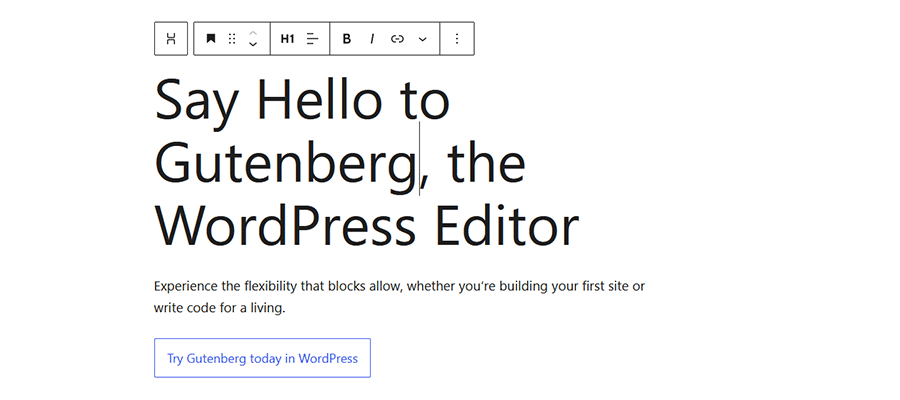26 years after its launch, Microsoft’s Internet Explorer is dead (well, sort of). Much has been written about the troubled web browser’s swan song. I jumped onto the bandwagon, sharing a silly poem to commemorate its sendoff.
The software saw quite a few ups and downs along the way. It started as a challenger to Netscape and didn’t take long to become a market leader. But there was also a lack of support for standards, a push for proprietary code, and a monopolistic scandal.
For web designers, IE was the thing we loved to hate. If you tried to build a cross-browser-compliant website during its heyday, you likely ran into some trouble when testing in Microsoft’s browser.
Layouts could be messy, as support for newer techniques like CSS Grid and Flexbox were lacking. And it seemed like there was always that one client or customer who used IE – meaning you had to provide a fallback.
While no longer having to support IE is a reason to celebrate, its demise does bring about a bittersweet feeling. What will we do without our favorite nemesis? Who or what could replace it?
It just so happens that the modern web has several potential candidates. Here are a few who could take the throne.
Tech Companies with Outsized Influence
For a time, Microsoft had a stranglehold on the browser market. And IE could be considered a means for the corporate giant to put its mark on how the web would evolve. But as the browser stumbled, the company’s influence shrunk along with it.
These days there are a handful of companies that have a huge say in what happens on the web. A decree from any one of them can send web designers scrambling to account for whatever change they’ve decided to implement. Among them:
It seems like everything Google does has an impact on our industry. For example, a change to its search algorithm means having to tweak SEO to stay relevant.
But it goes well beyond their search product. As the current top dog in the browser battle, Chrome is in a position to adopt standards and push technologies that potentially benefit Google. Competitors such as Firefox are struggling to survive, let alone take a bigger piece of the pie.
Core Web Vitals now dictates what performance metrics we need to adopt. And its AMP project compelled publishers to participate – even if it wasn’t in their best interest.
Microsoft may have dreamed of such influence, but Google achieved it.
With billions of users, Facebook controls mountains of data. And how they decide to use it affects both everyday people and businesses.
If you use the service, consider the typical items you see in your feed. Facebook has decided what’s relevant to you. It’s possible to see updates from friends and family, but you’ll also get a mix of posts from other sources – whether you’ve subscribed to them or not.
For businesses and non-profits, reaching your audience (even the ones who “like” your page) can be incredibly difficult. That is unless you pay to promote your content.
More directly of concern to web designers, implementing Facebook’s API into your projects means giving up some level of control when it comes to performance and privacy.
Like Google, Facebook’s services are often seen as necessary and unavoidable. As such, web designers have to deal with them – like it or not.

No-Code Tools
I know, we’re all supposed to embrace the no-code revolution. And there’s something to be said for tools that do some of the dirty work for us. Why craft a CSS Grid layout when a page builder can do it for us?
Many of these products do their job pretty well. The WordPress Gutenberg block editor, for example, has vastly improved since its initial release. There’s a learning curve. But once you get accustomed to how this and other no-code tools work, you can achieve some solid results.
But they can also be quite frustrating to work with. For example, if you want to implement a particular feature that one of these tools doesn’t offer, it can require an uncomfortable (and possibly unsustainable) workaround.
Performance can also suffer. Some tools add lots of overhead in the form of JavaScript or CSS. And, even if the code works, it can still conflict with other parts of your website.
While the right tool adds a layer of convenience, it may also require us to accept some serious tradeoffs. That could draw the ire of many a web designer.

Malware and Malicious Actors
Perhaps there’s never been a more dangerous time to manage a website. Malware is all around us and tends to rear its ugly head at the most inconvenient of moments.
And the people who create and spread this malicious code aren’t being effectively deterred. If anything, the market for bad actors is continually growing. Not to mention the increased sophistication of their attacks.
It has become a recurring nightmare for web designers. Cleaning up SEO spam, restoring infected databases, and attempting to harden code – only for it to happen again and again. It’s a real-life game of Whack-a-Mole.
Even worse is that solutions don’t appear to be on the horizon. Both web hosts and software developers are trying to level up, but key breakthroughs seem hard to come by. And now insurance companies are starting to take web security into account when selling policies. That’s not going to help.
The burden of securing the websites we manage is enough to make any web designer question their career choices.

The New Multi-Pronged Nemesis
When Internet Explorer debuted, the web was still a relatively new phenomenon. People were excited by the prospect of a truly global community and the information superhighway.
Save for Google and a few other services, IE was one of the last remaining relics of that era. And unlike those that are still around, it never quite evolved to the point of staying relevant. It may be that IE’s only claim to fame in the past 15-20 years was that it made web design harder.
This made it stand out in a way that Microsoft couldn’t have imagined back in the 1990s. It’s likely the reason they released IE’s successor, Edge. IE was simply too tainted to continue.
Today, there is no singular bogeyman. The web is multitudes the size and complexity of what it was back in the day. And, as referenced above, there are several companies, products, and maladies that impact us. You could theoretically pick a new one to curse each day.
IE was alone in its time and an easy target. In some ways, that almost seems quaint compared to the environment web designers face today.
A single nemesis that tries to ruin our good time? If only.
The post After Internet Explorer, Who Will Be the Web’s Next Nemesis? appeared first on Speckyboy Design Magazine.
